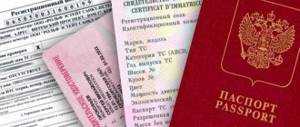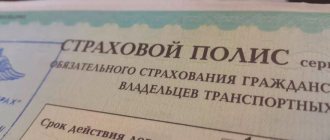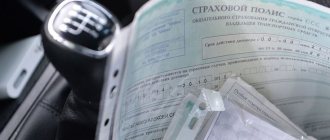July 21, 2020
The insurance company is a commercial organization, but unregulated expenses hit the wallet. Repairs under compulsory motor liability insurance do not always cover the limited payment of expenses, and insurers will try to benefit at the expense of clients. If the auto insurance does not cover the losses, the injured participant can take advantage of additional terms of the contract.
Where does the money for the surcharge come from?
During an accident, damage may occur that is not covered by insurance. The problem appears at the scene of the event or in a car service center. If compulsory motor liability insurance is correctly completed, the company is obliged to pay the remaining payment. The injured participant needs to fill out the documents correctly, if no traffic rules were violated.
When a paradoxical situation arises:
- The insurer deliberately reduces the cost of payment.
- Major repairs are more expensive than stated in the act.
The injured driver is not required to pay the costs out of pocket. They are covered by the community if a mistake was made during the preparation of the act. The commission may also be paid by the person responsible for the accident. In both cases, the victim must prove his innocence.
Which insurance company to contact?
From 2021, direct compensation for losses is allowed. That is, participants in road accidents can contact their Investigative Committee, which then negotiates among themselves. In Art. 14.1 of the law on compulsory motor liability insurance states that this is not possible in all situations, but only when:
- no people were injured;
- two or more vehicles were involved in the accident;
- accident participants have insurance policies.
In all other cases, the victim must contact the insurance company of the culprit or the culprit himself if that person does not have a policy. However, it is necessary to take into account the consequences of an accident and the size of the established payment limits.
If insurance coverage is insufficient, the victim has the right to file a claim to demand proper compensation.
It is also possible to resolve the issue by agreement.
If there are victims, we implement only one option - contacting the culprit’s investigative committee. By the way, the latter can contact his company when the accident is registered according to the European protocol.
The company deliberately underestimates the amount
A representative of an organization can artificially reduce the cost of car insurance. When the car is repaired, the owner will be required to pay the costs. The owner of the vehicle must follow the following procedure:
- Request from the community a copy of the insurance event report. The document contains all the details of the incident. The paper is issued within three days from the date of filing the application or drawing up the agreement.
- Recheck the calculated data. There is a directory available in the public domain on the official RSA website. If the final payment does not coincide with the results of car insurance, the data is deliberately underestimated.
- Conduct an independent expert assessment. The master (organization) must be in the general register and have the appropriate certificate.
- Address the pre-trial claim to the insurer (Part 1, Article 16.1 No. 40-FZ). The administration is obliged to consider the complaint within 10 days from the date of filing. If the driver does not receive a response within this period, a claim can be filed in court. The requirement is drawn up in free form, taking into account all the circumstances.
- Filing an application to the court with the possibility of pre-trial proceedings and compensation for penalties (1% of the difference or 0.05% daily for a delay in responding to the complaint).
If the value of the claim does not exceed 1,000,000 RUB, no tax is charged. The amount of loss less than 50,000 RUB is examined by the magistrate court. If the rate is above 50,000 RUB, this is handled by district structures. The applicant is additionally entitled to half the money from the cost of damage in case of successful completion of the case.
When should you go to court?
There are many situations when the insurance company does not pay compensation.
One of the reasons for refusal is that the guilty party does not have a compulsory motor liability insurance policy. If the victim has a CASCO policy, then these expenses will be compensated, but if his liability is insured by a simple motor vehicle, then the insurance company will refuse on completely legal grounds. What to do in this case?
The victim must contact the culprit, who, in turn, must compensate for the damage. To do this, a pre-trial claim is drawn up, in which he sets out the circumstances of the traffic accident and the amount of damage.
The claim is accompanied by reports of an inspection of the vehicle by service station employees or an independent expert, if any. If the offender does not respond to this letter within 10 working days, the victim can go to court.
As a rule, the court obliges the culprit to pay damages to the victim, as well as all legal costs and expenses of the injured party that arose as a result of the proceedings must be paid by the defendant.
The only downside for the plaintiff is that the period for consideration and decision-making can be extended for a long time, but the result will be unchanged: the car will need to be repaired at his own expense, and then this amount will be compensated by the person responsible for the accident.
Often, petitions are filed in court to speed up the consideration of the case. As a rule, this is associated with claims if the insurer does not pay compensation, and there is no legal basis for this.
The court can hold the insurance company liable, however, to speed up payment, you can bring it to the insurance company yourself.
It is important to remember that refusal to compensate for damage by the insurer is not yet a reason for grief. In this case, go to court with a claim for payment of damages by the culprit of the traffic accident.
Repairs cost more than insurance
If the price of special repairs exceeds the specified amount of insurance, the victim can take advantage of Article 1064 of the Civil Code, Part 1. The difference will be paid by the delinquent.
The actions should be as follows:
- Conduct an autonomous peer review.
- Send a pre-trial request to the delinquent. The claim must indicate the missing amount.
- If the responsible participant refuses to pay the costs, send a statement to the court.
The procedure allows the situation to be resolved peacefully. Problems arise if the responsible party refuses to pay. Only through the court can the issue be resolved.
What to do if the culprit of the accident does not have a compulsory motor liability insurance policy
At the time of the accident, the injured party may not know that the driver who caused the accident does not have a valid motor vehicle license. Such situations are quite rare, but they do exist. For example, the owner did not drive a car for a long time, the compulsory motor liability insurance expired. The driver went to apply for a new policy and at that time got into an accident.
In this case, when the injured party contacts the insurance company to receive a compensation payment or referral for restoration repairs, the insurer will refuse to compensate for the damage caused.
Therefore, the party injured in the accident will be able to obtain payment for car repairs only through the court. The defendant in the case will be the citizen at fault for the incident, and not the insurance company. The culprit will have to compensate for the damage caused not only to the car, but also for restorative treatment if the health of the other party was harmed.
What is needed to collect the missing amount?
Amendments to the OSAGO law oblige repairmen to use new and high-quality parts. Replacement and repair of damaged components occurs in accordance with established standards. The rules do not specify the manufacturer, but if the vehicle is less than two years old, it must be sent to an authorized service center.
During the period of filing a claim, the motorist must have an insurance contract and an independent examination report. If the case goes to justice, you must add:
- photocopy of passport;
- power of attorney for the right to own a car (PTS, STS);
- certificate of accident;
- OSAGO certificate;
- a photocopy of the pre-trial claim and the response of the other party (the insurer or the culprit of the incident);
- video/audio evidence and witness statements;
- expense receipt.
Events may vary. The car owner needs to collect documentation in advance (after the accident) in order to have a strong argument. A missing transcript or receipt could jeopardize the prosecution's trial.
Compensation periods for compulsory motor third party liability insurance
Article 11 of the law on compulsory motor liability insurance states that it is required to report the occurrence of an insured event at the first opportunity or within the time period specified in the contract. Within 15 days after filing an application for compensation, the insurer is obliged to conduct an examination, calculate the amount, make a decision on payment and transfer/issue funds to the victim within the next five days.
That is, after 20 working days, the insurance company is obliged to pay, send for repairs or provide a reasoned written refusal.
It should be remembered that according to the Civil Code, the limitation period for such cases is three years.
Clause 4.26 of the Compulsory Insurance Rules talks about the possibility of postponing the decision on payment in the event of an open criminal case or investigation related to an accident. Payment will be deferred until the insurer receives a decision from the relevant authorities.
Rights and obligations of the parties
If the contract is not signed, and the company or service station demands money, you should not pay it. The difference in payment is the relationship between the auto insurer and the client, but not the service center. Any threats, blackmail and attempts to evade responsibility are resolved through the justice system.
By law, you have 30 days to repair your car. If the vehicle is not returned during this period, the owner can write an appeal to the prosecutor's office. Car insurers have no reason to force compensation. For everything to go legally, the driver needs to take into account all the nuances:
- conduct an independent assessment of damaged vehicles;
- refuse to sign additional papers;
- consult with a legal entity;
- monitor changes in regulations.
If the auto insurer managed to get the client to sign questionable papers, the outcome depends on the complexity and timing of the process. You can try to increase the amount of accrual through an independent examination and make claims to the service station. When signing a dubious contract, the applicant is unlikely to be able to resolve the issue in his favor.
After a collision, the injured party has the right to demand full compensation for damage. The policy does not always cover the damages caused, and the agent can take advantage of the car owner's naivety by covering the shortfall from his pocket.
If the vehicle owner completes the documentation correctly, the organization will cover the shortfall and transfer the vehicle to a service center, where employees will have to replace the damaged parts with new spare parts within a specified period of time.
Which company pays for an accident under CASCO?
In turn, the situation is different with the second type of policy. Since it is voluntary, not every car owner may have it. Many drivers are reluctant to take out CASCO insurance due to its relative high cost compared to OSAGO. Although, such insurance in some situations turns out to be extremely useful.
Moreover, a number of motorists are overly confident in themselves, emphasizing their experience and accident-free driving. As a result, they believe that two types of policies are an unnecessary measure. This eliminates the possibility of an accident due to your own fault. As a result, some drivers turn out to be right. But others run into trouble and have to restore the car at their own expense.
It is worth noting that having a CASCO policy does not relieve you from the obligation to issue compulsory motor liability insurance. Each insurance contract can be concluded either with one company or with different ones. Thus, if a driver purchases a voluntary insurance policy, then he must also have a mandatory one.
As a result, whose insurance company pays for damages in an accident depends on who caused the accident:
1. If a driver with two policies is found to be at fault for an accident.
In such a situation, under the compulsory motor liability insurance policy, its insurance company compensates the losses of the injured party. But repairs of your own vehicle are carried out on the basis of CASCO. In this case, the organization responsible for the accident also bears the costs. This may be the same or a different company from which the second insurance was taken out.
2. If the car owner with a CASCO policy is recognized as the injured party.
Then, according to the law, his damages are compensated by the company at fault for the accident on the basis of the MTPL policy. However, these costs are borne by the victim’s CASCO insurance:
- If the other participant in the accident did not have a valid compulsory insurance policy. He may have been uninsured or the policy may have expired.
- If for some reason it is not possible to identify the culprit in the accident.
- The amount of compensation under compulsory motor liability insurance does not fully cover the damage received.
Amount of insurance payments under the insurance contract
The maximum payment under compulsory motor liability insurance is limited by law and in accordance with Art. 7 of the Federal Law (as amended on July 26, 2017) “On compulsory civil liability insurance of vehicle owners” (as amended and additionally entered into force on September 25, 2017), amounts for each victim:
- 500,000 rubles when harm is caused to the health and life of the victim;
- 400,000 rubles when property was damaged;
- 50,000 rubles, reimbursement of expenses for the restoration of the vehicle, if the paperwork was completed in accordance with the European protocol, without the participation of traffic police officers;
- 475,000 rubles if the accident resulted in the death of the victim. Persons for whom the deceased was the breadwinner or was dependent on them are entitled to receive the same amount. If there are none, then his children, spouse, parents;
- 25,000 rubles for funeral services. Paid to the relatives of those killed in an accident.
The guarantee of insurance payments is valid for the entire term of the contract and does not depend on the number of occurrences of an insured event (accident).
The amount of payments under the insurance contract is determined by the Regulations of the Central Bank of Russia dated September 19. 2014 N 432-P “On a unified methodology for determining the amount of costs for restoration repairs in relation to a damaged vehicle.”
Very often, the amount calculated using this method does not coincide with the amount actually spent on repairs. It is based on the more common standard conditions of wear of parts and does not take into account the operating features and characteristics of the machine at the time of the accident.
In addition, victims, when restoring their cars, try to purchase new components to replace the old ones that have been used for a long time. As a result, it becomes very problematic to bring the amount of insurance payments closer to the true amount of damage.
If the victim agrees to undergo restorative repairs at a service station recommended by the insurer, then the wear and tear of spare parts will not be taken into account and he will be supplied with new parts, the bill for which will be paid by the insurance company. When making a cash payment, depreciation will be taken into account, and accordingly the amount of payments will be less.
How to file a claim against the person responsible for an accident?
To draw up a statement of claim, the law does not establish an official template; it is important to be guided by the norms of the Civil Procedure Code of the Russian Federation; also, claims must be stated taking into account the following basic principles:
- Briefness of the content set out in the claims . Circumstances must be contained only relevant to the subject of the statement of claim.
- Content validity . Claims must have rules of substantive and procedural law that also relate to the substantiation of the stated circumstances
- Content formatting . The text format must be set uniform throughout the entire text, with the most commonly used sizes - 14 point, spacing - 1.5
The statement of claim for compensation for damage caused by an accident by its nature contains the following information:
- name of the court to which the claim is filed
- Full name, telephone number, e-mail for communication between the Plaintiff and the Defendant
- the circumstances of the dispute as a result of which the right was violated, resulting in harm to health or death
- motivation of the requirements - what is the basis for the person who received harm as a result of an accident and why
- pleading part - what measures, in the opinion of the injured person, should be
- a list of documents necessary to substantiate the circumstances referred to by the Plaintiff
- when the statement of claim was drawn up (date) and the sender’s signature
USEFUL : more advice from a lawyer on filing a claim in court in the next video










